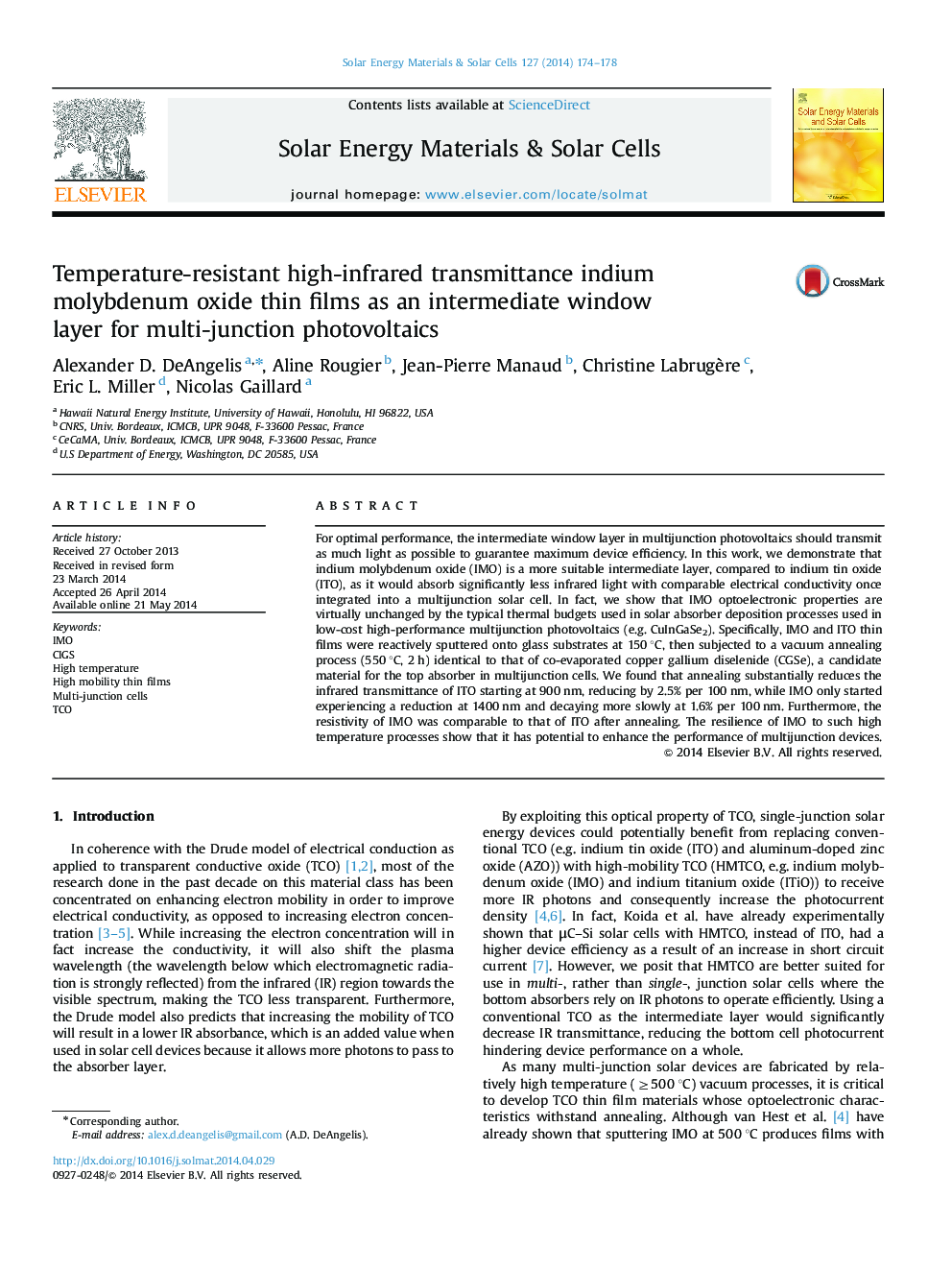| کد مقاله | کد نشریه | سال انتشار | مقاله انگلیسی | نسخه تمام متن |
|---|---|---|---|---|
| 78147 | 49317 | 2014 | 5 صفحه PDF | دانلود رایگان |
• Unlike ITO, IR transmittance of IMO stays high after a 2 h 550 C vacuum annealing.
• After annealing, IMO resistivity is close to that of ITO.
• ITO is not optimal for multi-junction solar cells.
For optimal performance, the intermediate window layer in multijunction photovoltaics should transmit as much light as possible to guarantee maximum device efficiency. In this work, we demonstrate that indium molybdenum oxide (IMO) is a more suitable intermediate layer, compared to indium tin oxide (ITO), as it would absorb significantly less infrared light with comparable electrical conductivity once integrated into a multijunction solar cell. In fact, we show that IMO optoelectronic properties are virtually unchanged by the typical thermal budgets used in solar absorber deposition processes used in low-cost high-performance multijunction photovoltaics (e.g. CuInGaSe2). Specifically, IMO and ITO thin films were reactively sputtered onto glass substrates at 150 °C, then subjected to a vacuum annealing process (550 °C, 2 h) identical to that of co-evaporated copper gallium diselenide (CGSe), a candidate material for the top absorber in multijunction cells. We found that annealing substantially reduces the infrared transmittance of ITO starting at 900 nm, reducing by 2.5% per 100 nm, while IMO only started experiencing a reduction at 1400 nm and decaying more slowly at 1.6% per 100 nm. Furthermore, the resistivity of IMO was comparable to that of ITO after annealing. The resilience of IMO to such high temperature processes show that it has potential to enhance the performance of multijunction devices.
Figure optionsDownload as PowerPoint slide
Journal: Solar Energy Materials and Solar Cells - Volume 127, August 2014, Pages 174–178
